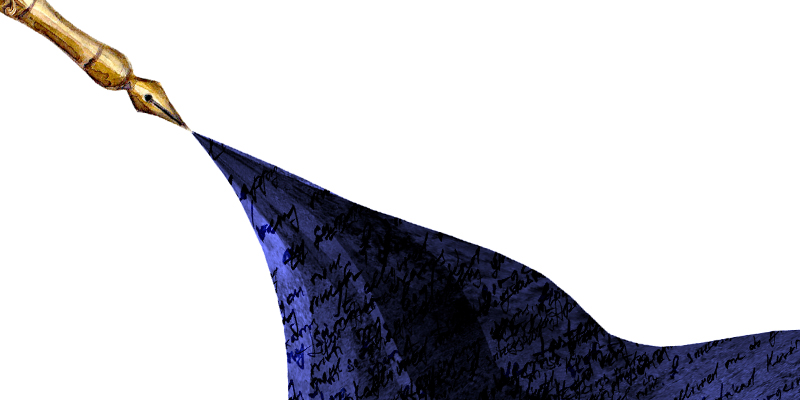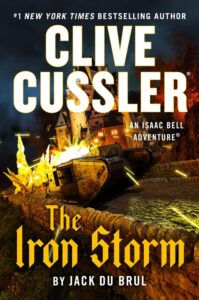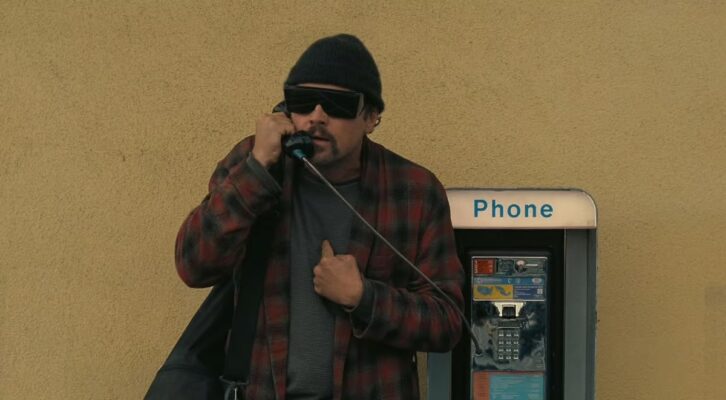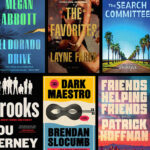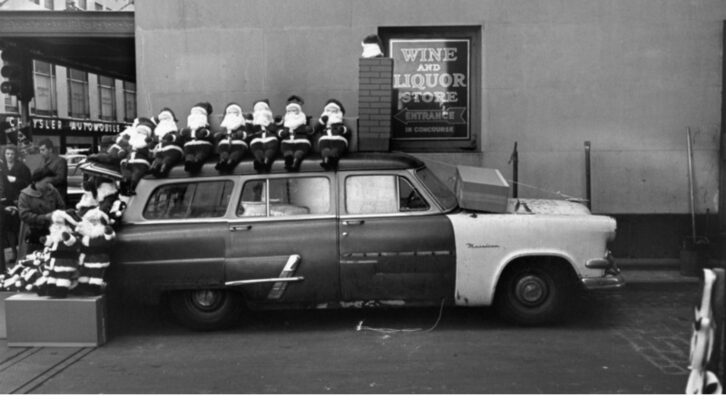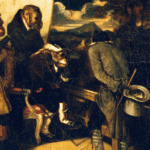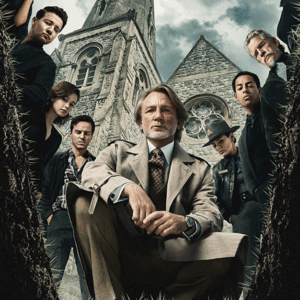Every so often a book comes along that changes popular fiction, possibly forever. It’s not only that it’s a best seller but the book effects countless novels that follow it. One such book that comes to mind is Dan Brown’s DaVinci Code. Suddenly popular fiction was rife with secret societies bent on hiding some historical fact that could rock society to its core. DaVinci Code knockoffs became a sub-genre unto itself and launched many successful writers who followed that well-lit path.
Back in the 1980’s another such sea change occurred when the Naval Institute Press published Tom Clancy’s The Hunt for Red October. Like DaVinci Code, Clancy’s book spawned whole libraries of clones and was the genesis a new genre dubbed technothriller. Dozens of new authors emerged sprinkling submarine and aircraft facts in their titles. Prior to Red October, a book’s hero could carry a gun. Afterward it had to be a specific gun, in a specific caliber, with X number of rounds in its magazine as well as specified grips and optics. Suddenly details mattered.
I was an avid reader back in the day, but I couldn’t afford the hardcover when it came out. I do remember devouring a paperback of The Hunt for Red October and thoroughly enjoying it. At the time I was studying international relations with an eye towards a career at the State Department. I had no aspirations to be a writer at all. Hell I couldn’t even type. Still can’t. I recall at the time, though, that I thought a novel like Clancy’s taking place in World War One or Two, a book drenched in detail and technical minutia, would be really interesting.
Flash forward my life thirty years. No State Department from me but I’ve published nineteen novels and is casting around for ideas for number twenty, another Clive Cussler/Isaac Bell adventure. That’s when that vague notion from so long ago sprang to mind. Perhaps on some subconscious level I had been building to this idea as my previous tales of the legendary Van Dorn Agency detective were drawing ever closer to the Great War and America’s involvement.
World War One is an especially horrible chapter in human history, where the tactics of the Nineteenth Century met the mechanization of the Twentieth and made slaughter industrialized. I had to capture not only the details of airplanes and tanks and guns but also the senselessness of it all. The Iron Storm is the result of all that work, a novel of which I am especially proud.
In a career spanning decades and eighty-plus books, this is the first novel under the Cussler name where a character actually fights in a war. Clive’s books are full of action, intrigue and danger but The Iron Storm is the first, to my knowledge, that the main character is involved in an actual declared war. Knowing that, I strove to make the book as accurate as possible, again echoing Clancy’s attention to detail in his technothrillers.
With the Internet, there’s no reason for an author to make technical mistakes other than a lack of attention to detail. In one scene from The Iron Storm, Isaac Bell takes on the Manfred Von Richthofen, Red Baron himself, in a dogfight over no-mans-land. I think many authors would have put Von Richthofen in his iconic red triplane and not given it a second thought. I dove deeper into the German ace’s history learned that at the time of the war I set my aerial duel, the he was typically flying the Albatross DIII, a biplane. However that aircraft had been grounded due to a manufacturing defect and for a few weeks Von Richthofen took to the skies in an older DII instead.
How does this detail matter? It does and it doesn’t. Other than a few military buffs, no one knows the difference, so who cares? On the other hand, it kept me digging deeper and deeper. As I researched the planes of the era, the more comfortable I became writing about them. I understood their strengths and weaknesses, learned of the tactics used by pilots and was able to incorporate all of this into a scene most early readers has said is one of the best I’ve ever written.
Something similar happened when I wrote about Bell escaping a German stronghold in a tank with some fellow prisoners. Tanks of the era were designed to move only as fast as a man could walk. There was no need for them to crawl any faster. Not very exciting if Bell can’t outpace men walking alongside his escape vehicle. Simple fix, have the Germans who originally capture the tank replace its underpowered engine with something better. Again it’s a tiny nit, but by the time I finished researching and writing the scene I felt I could drive one of those easts myself.
When you’re writing doing general research for a novel, new ideas and set pieces can always crop up. For the opening of the novel, I had planned for Bell to arrive in England at the port of Southampton, where all the transatlantic liners docked. Then I learned that Southampton was almost exclusively used to shuttle men and material to the front in France and that transatlantic ships were now docking in Liverpool. Fair enough. A little research on the city revealed that up the Mersey River from the downtown area sat something called a transporter bridge. Never heard of it. More research. Rather than a solid roadway spanning the entire length of the bridge (think the Brookly or Golden Gate) this one consisted of large car-carrying platform that could be moved across the river much like a cable car.
As soon as I knew the Mersey River transporter bridge was a thing, I knew I had to write a highwire action scene with Bell chasing bad guys across the span.
Later while researching airplanes, I stumbled across a behemoth of a plane called the Zeppelin-Staaken, built by the same company who made the eponymous airships. Like the Mersey River transporter bridge, this multi-engined airplane was just too amazing(one of the first to have an enclosed cockpit for one) not to incorporate into my story.
I’ve often spoken of the need for outlines when writing a novel, especially complex mysteries and thrillers. There are so many threads that need to be woven together that it’s best to have a picture of the pattern before pulling out the knitting needles. That is not to say a writer can’t be flexible.
When I discovered the Zeppelin-Staaken, I created an entire subplot about its use just so Isaac Bell could be the first person ever in an aerial hijacking. Note to readers, that term ‘hijack’ wasn’t coined until 1923 and was originally used to describe bootleggers stealing each other’s booze along the highways. I used it in The Iron Storm but not as dialogue, so I felt it was okay.
I wanted Bell to experience the horror of life in the trenches that soldiers on both sides of the front faced. Typically, battles would rage for days on end, as wave after wave of men were hurled against their enemy’s defenses—barbed wire, land mines, machine gun positions—all under the constant pounding of many hundreds or even thousands of cannons firing in continuous barrages that shook the ground like a Richter scale earthquake.
This seemed too impersonal in its scale for my book so once again I relied on research to find that the Germans sent small cadres of specialist soldiers they called stormtroopers on raids into the British and French lines. These men had all the best gear and training, fought ferociously and vanished again just as quickly as they appeared, often kidnapping allied soldiers to interrogate back in their trenches. This was just one more terror facing the allies. Even on a quiet night when the guns were silent and there was no prospect of action, Germans would loom out of the darkness, sowing chaos and death without warning. It was that intimacy and immediacy I wanted to capture and convey to readers. It wasn’t just mud, and rats, and trench foot and the dread of going over the top, it was also the constant worry that the war would come at you at any moment in silence and surprise.
One of the questions I field the most often is where my ideas come from. I will conclude this by telling you the seed that grew into this book was inspired by Star Wars, more specifically the visual of Han Solo running around the Death Star firing his blaster with abandon. I thought about what the early twentieth century version of such a superweapon could be and knew it was the dreadnaught-style battleships what ruled the waves. I wanted Isaac Bell skulking around a battleship but there would be no princess laying languidly in her cell awaiting rescue. His was a different mission, one that was inspired by the second Clive Cussler book I read as a kid, Vixen 03. That novel’s denouement came with a stripped-down battleship sailing up the Potomac River to shell Washington DC. In my book, I’d have a stolen German battlewagon firing into the concrete canyons of Manhattan with Bell aboard desperate to stop it.
Once I had that scene in mind, it was my job to backfill the steps and characters to get him to that moment. And to me that’s the essence of writing a novel. I see where it has to go. I just need to describe the journey.
***

